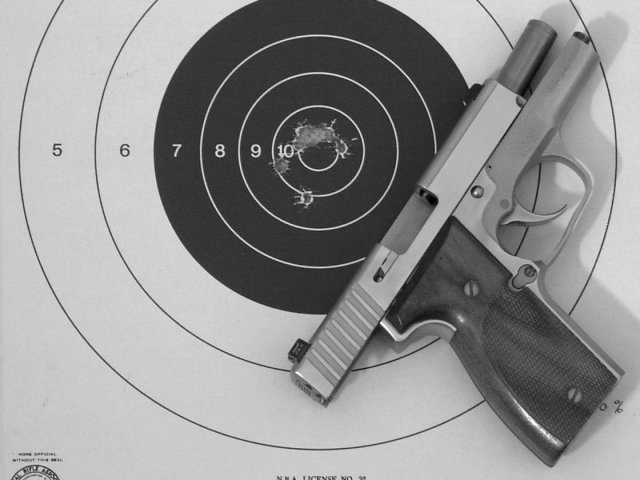|
|
|
Copyright
© A.D. 2007
by M.
D. Van
Norman.
|
|
The reality
is far more complex. While firearms
are relatively easy to use, they are not so easy to use well. Common
street
gangsters, for example, are infamous for their frequent inability to
hit their
intended targets. Similarly, recent police shootings have been noted as
much
for their low levels of accuracy as they have for their high volumes of
fire.
Luckily for the victims of such gunplay, bullet wounds are often not
instantly
fatal. In fact, the majority of handgun-related injuries are readily
survivable.
Historically,
firearms were adopted for military
use not because they were especially effective weapons but for reasons
of
economy. A malnourished conscript could be trained how to load and fire
a
musket in a matter of days, while it took years of training and
physical
conditioning to make an effective bowman. Guns, powder, and shot also
quickly became
cheaper to manufacture than bows and arrows. Firearms could be fielded
more quickly,
in greater numbers, and less expensively than longbows and crossbows.
However,
their effectiveness on the battlefield depended on massed volumes of
fire
rather than individual marksmanship. It wasn’t until the 19th
century A.D. that firearms commonly achieved
the
precision we know today.
The problem
is an angular one. Small errors in
the alignment of the gun with its target are magnified more and more
dramatically as the distance between them increases. At longer ranges,
gravity
and wind also become important factors. The untrained or inexperienced
shooter
who fails to align the sights and/or who jerks the gun off target as he
pulls
the trigger will miss more often than not.
I knew all of
this before I ever fired a shot,
but I was still chagrined at how poorly I performed the first time I
stepped up
to the firing line. My shots were all over the target, even though it
was only
a few feet away, and this was after several hours of classroom
instruction. In
fact, it took me about three years of somewhat regular practice to
become
passably competent with a handgun.
|

It took three
years of practice for me to produce this result at a range of just 21
feet.
|
|
Marksmanship
is a skill that must be learned and
practiced. The mere presence of a firearm can deter violent aggression,
but
just having one doesn’t mean that the defender will actually be able to
fight
off an attack.
Even shooting an attacker doesn’t mean that he won’t still be able to
beat,
stab, or shoot his victim to death before becoming incapacitated by his
wounds.
It’s just not
as easy as it looks.
|
|



